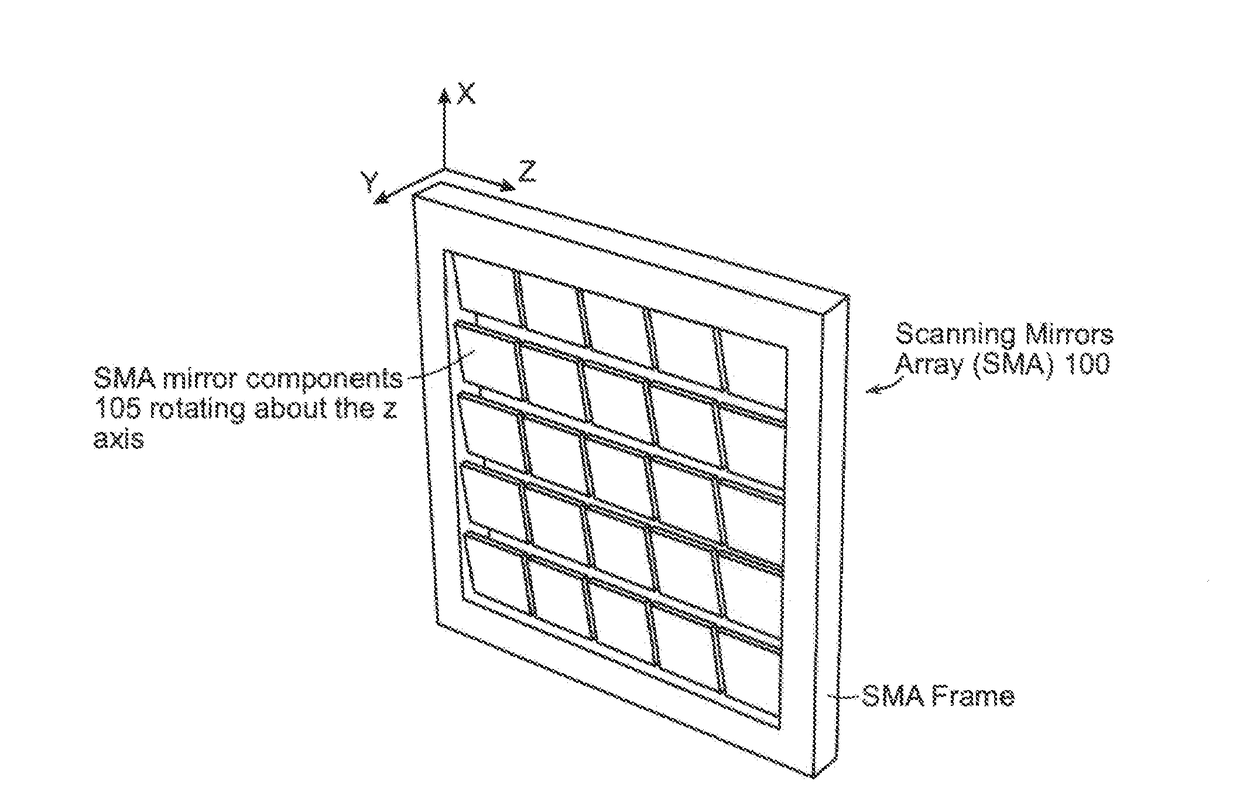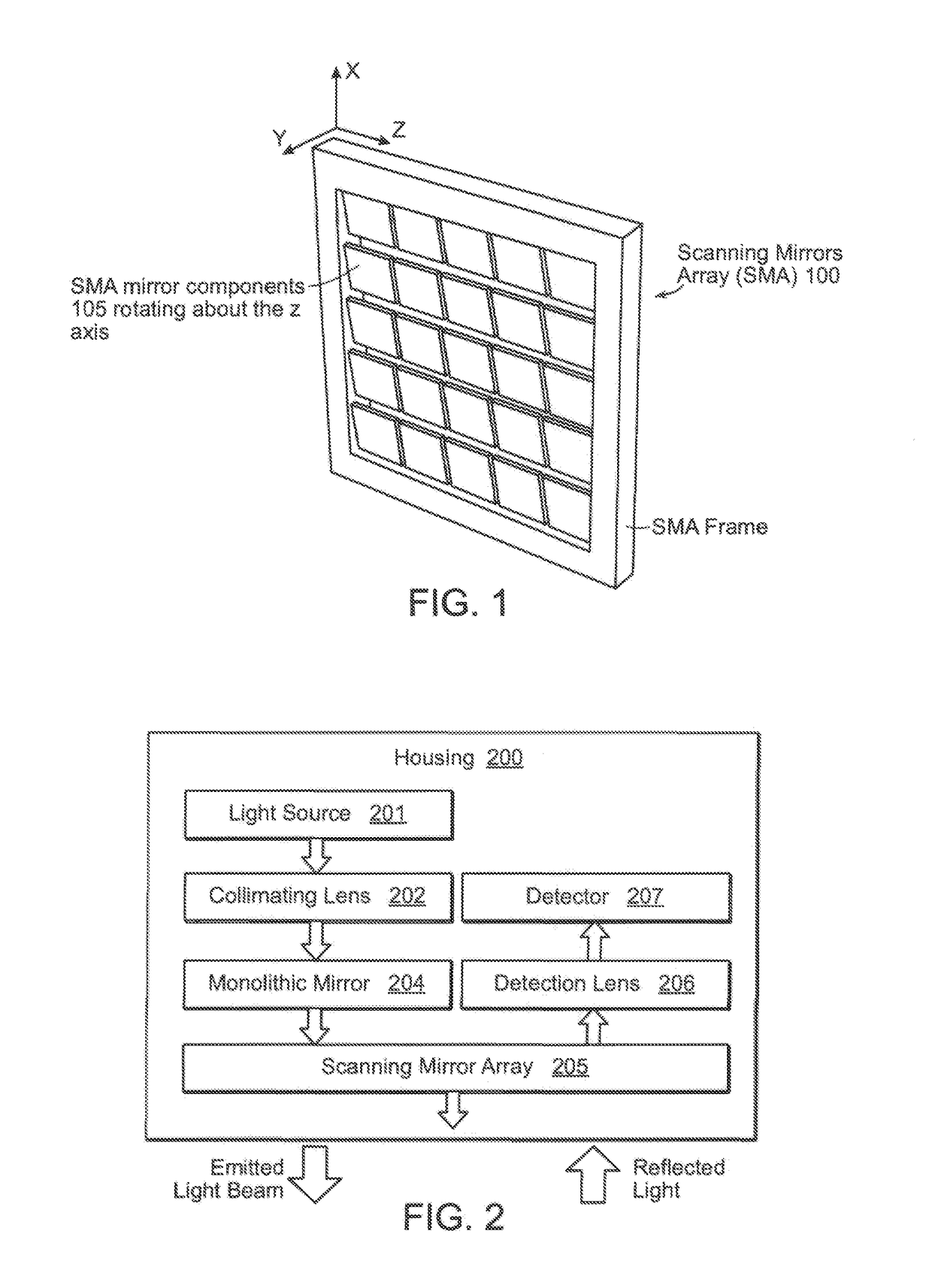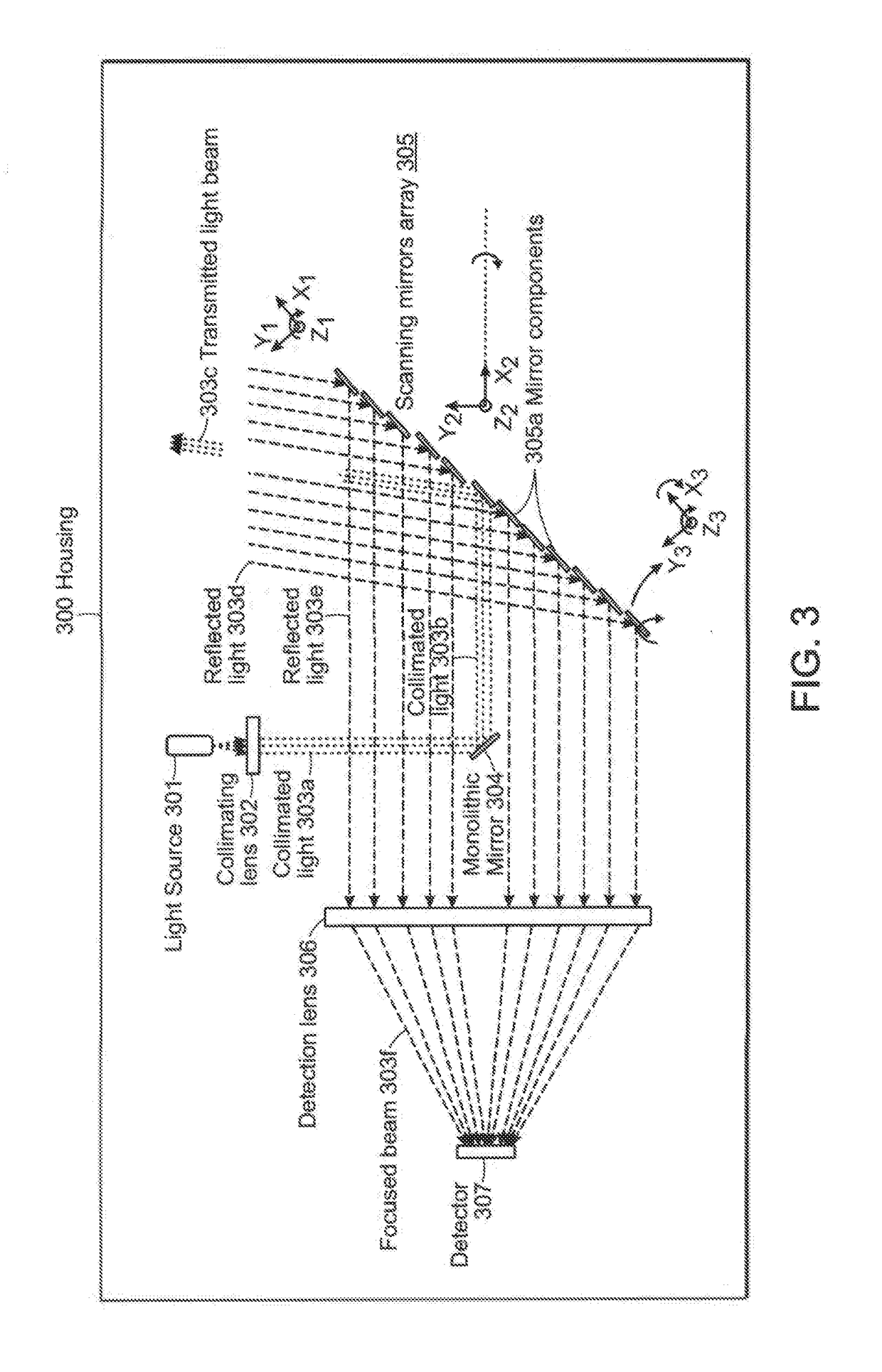LIDAR Device Based on Scanning Mirrors Array and Multi-Frequency Laser Modulation
a laser modulation and mirror array technology, applied in the field of laser modulation devices based on scanning mirror arrays and multi-frequency laser modulation, can solve the problems of limiting the acceptable laser power of state-of-the-art lidars such as energy consumption and operating temperature requirements, and achieve the effect of reducing background nois
- Summary
- Abstract
- Description
- Claims
- Application Information
AI Technical Summary
Benefits of technology
Problems solved by technology
Method used
Image
Examples
Embodiment Construction
[0034]The LiDAR device according to this invention may include a single or a multitude of light sources, and a single or a multitude of detectors. By projecting continuous waves or discontinuous light pulses onto various objects and measuring certain features of the reflected light e.g. time of flight (TOF) or phase lag with respect to the projected light one can estimate the distance of various objects in the environment and form a point cloud of the surroundings. Such information can be very useful in various applications such as autonomous driving and robotics. State of the art designs of LiDARs are often very limited in terms of data throughput and resolution. Furthermore, due to a need for multiple detectors and light sources the design and calibration can be complex and the associated manufacturing cost can be very high. Furthermore, such designs often leave very limited room for flexibility and on the fly tuning / changing of various characteristics of the instrument such as wa...
PUM
 Login to View More
Login to View More Abstract
Description
Claims
Application Information
 Login to View More
Login to View More - R&D
- Intellectual Property
- Life Sciences
- Materials
- Tech Scout
- Unparalleled Data Quality
- Higher Quality Content
- 60% Fewer Hallucinations
Browse by: Latest US Patents, China's latest patents, Technical Efficacy Thesaurus, Application Domain, Technology Topic, Popular Technical Reports.
© 2025 PatSnap. All rights reserved.Legal|Privacy policy|Modern Slavery Act Transparency Statement|Sitemap|About US| Contact US: help@patsnap.com



